Budapest - Finding Where People Live
![]()
One morning, we asked our friend, Szabo, at the desk of the panzio where we could find the places where people live. We were especially interested in seeing the pre-transition (Communist era) housing in Budapest. He was surprised, and replied that everything worth seeing in Budapest is in the Belvaros (historic district). But we explained that one of our research goals was to document all the neighborhoods of Budapest. Understanding our quest, he suggested we ride to the end of the Metro Red Line east to Ors Vezer tere, so we did.
We arrived and realized that we were in another milieu that contrasted sharply with the historic heart of the city. Leaving the Ors Verer tere Metro station we were initially confronted by a complex of big box retail stores. Looking beyond these, we saw the expansive gray facades of substantial apartment blocks, eleven stories high. These were the 'housing estates' built in the years following the end of World War II to provide homes for the new families of returning soldiers.
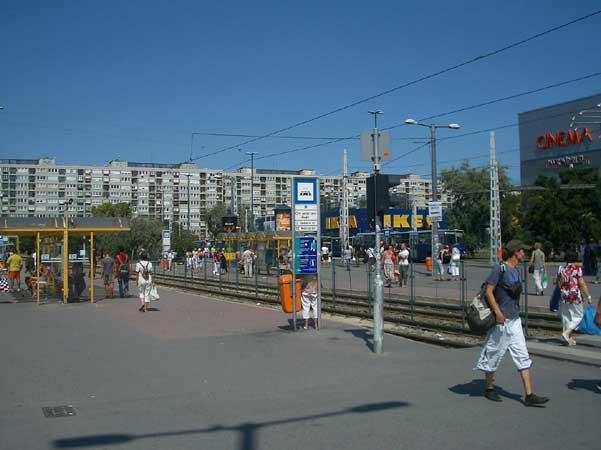
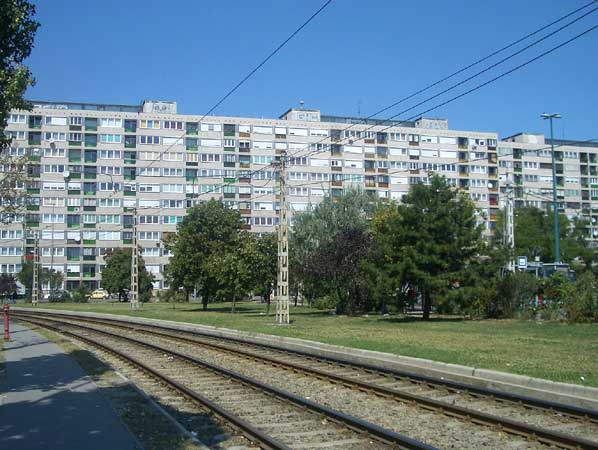
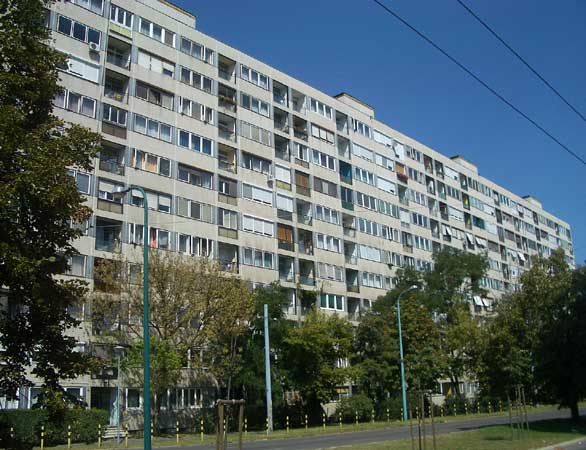
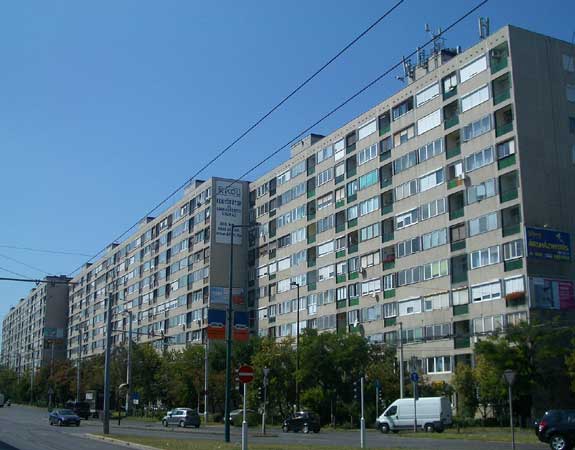
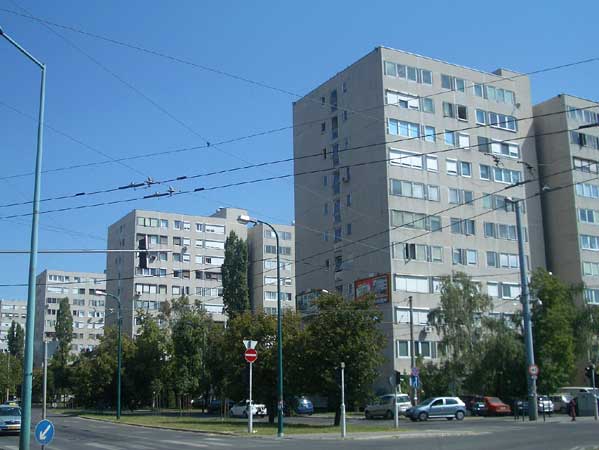
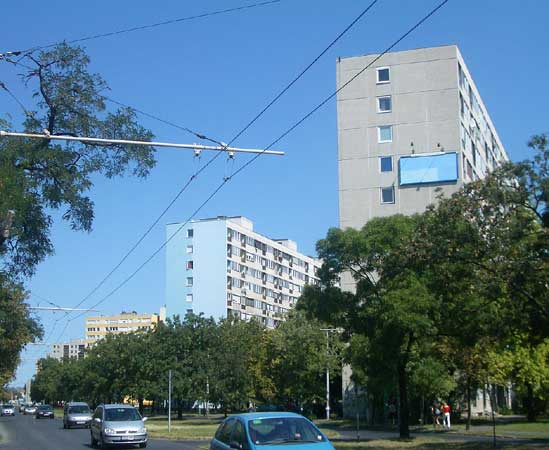
We walked around these buildings to determine if they were occupied and well maintained. Judging from the exterior, the answers to both questions was "Yes". Most of the flats had nice curtains in the windows and the entryways and sidewalks were in a good state of repair, leading us to believe that there was a good level of mutual caring by the residents. We found ourselves wishing we could visit a family in one of the flats inside to learn about their lifestyle here.
Returning to the shopping area we noted that it was a major transit hub. In addition to the Metro Red Line into the city, there was an HEV commuter train taking travelers further away from the city, a tram line to the north and south and a large bus plaza.
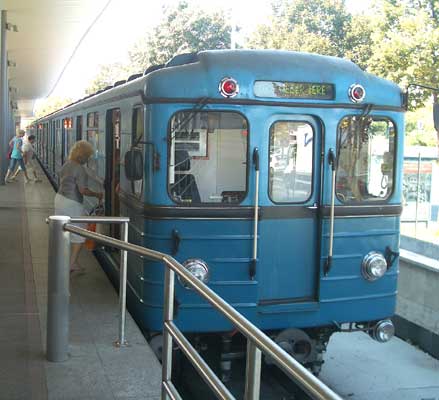
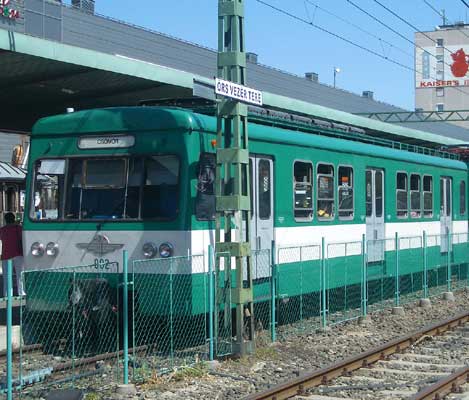
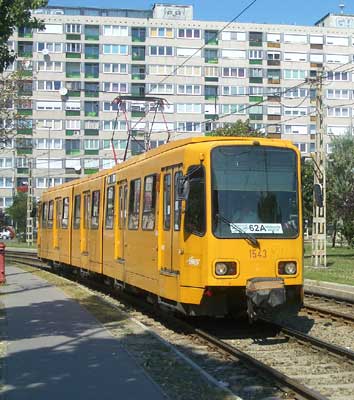
Nearby was the Arkad, a multi-level mall of retail stores, as well as a row of small stalls selling all sorts of items.
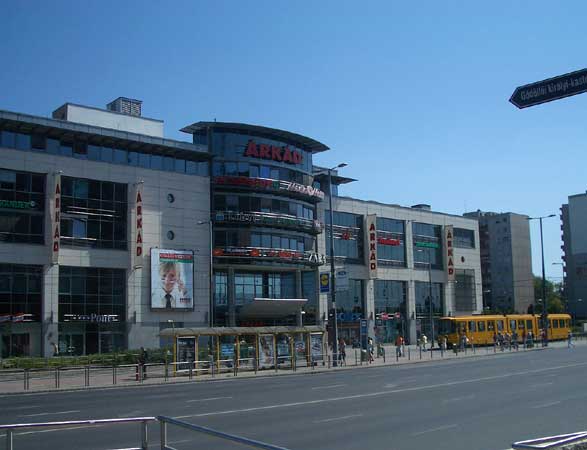
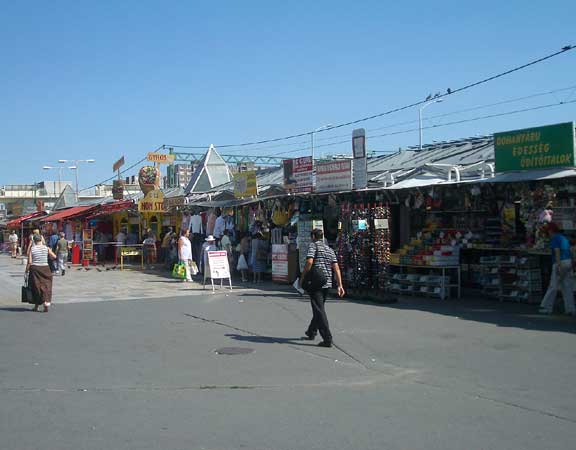
In another direction an IKEA store offered an intriguing additional evidence of thoughtful planning. The building was a typical big box store but was conspicuous by the lack of the acres of surface parking that would usually accompany such a store in the US. Instead, the space outside the store's entrance was a green park But where was the parking? We found it beneath the store (note the entrance ramp in the picture below right!). Could this happen in the US, we wondered, and hoped it would.
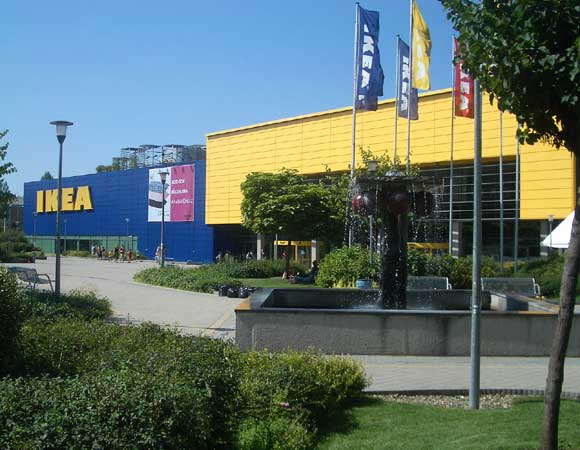
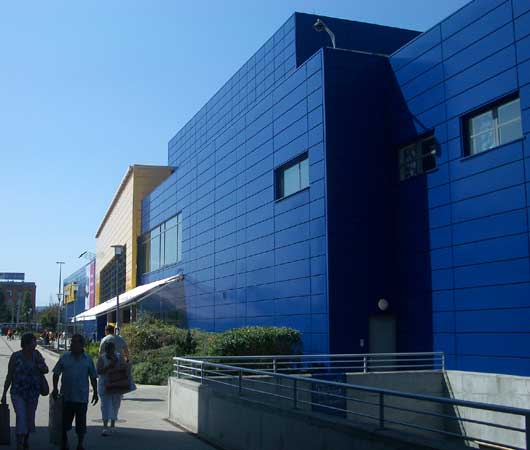
Before traveling on we reflected on how this place was a good example of a place where functions important to people existed side by side - a place where multiple transit choices were present and shopping opportunities served the nearby residents of the apartment housing as well as those changing from one mode of transportation to another.
To continue our research, we boarded a tram and rode to the north end of the city to explore another group of housing estates in Angyalfold. The buildings were similar, but many had shops in the ground floor and there were food stores an easy walk away.
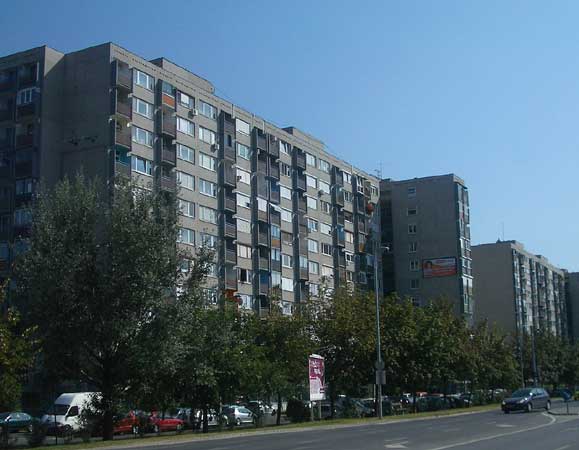
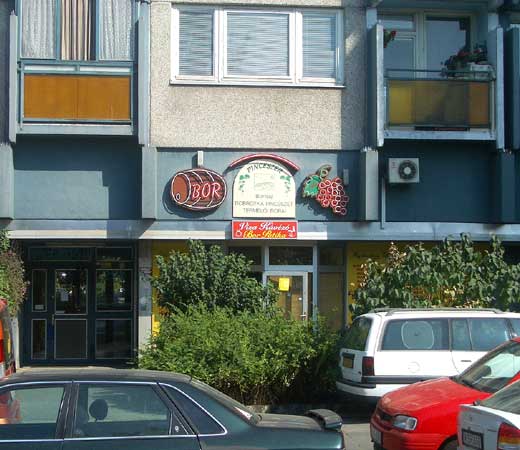
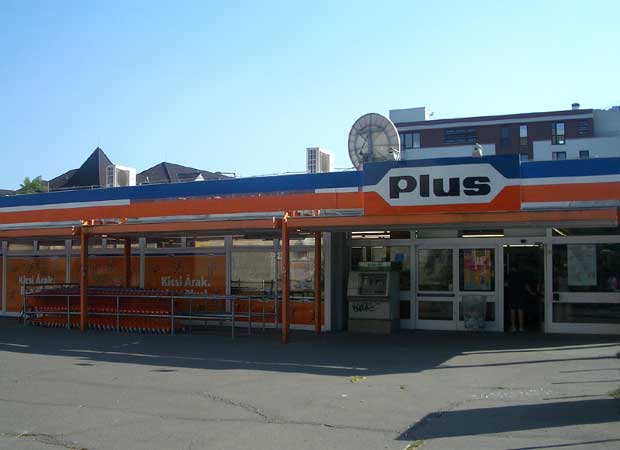
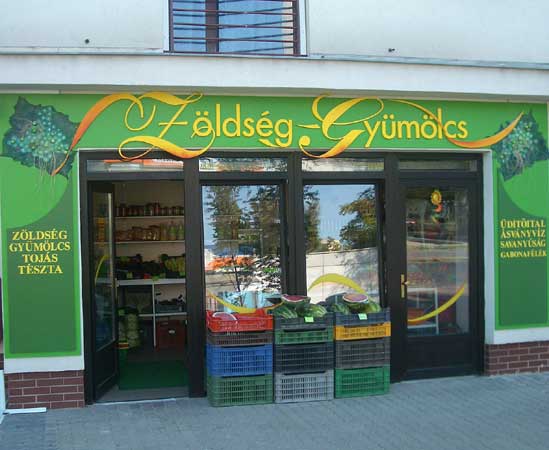
Nestled between the buildings were a school with play ground and a green field.
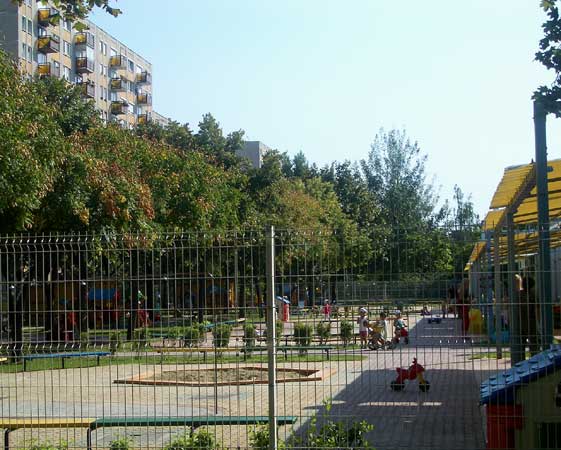
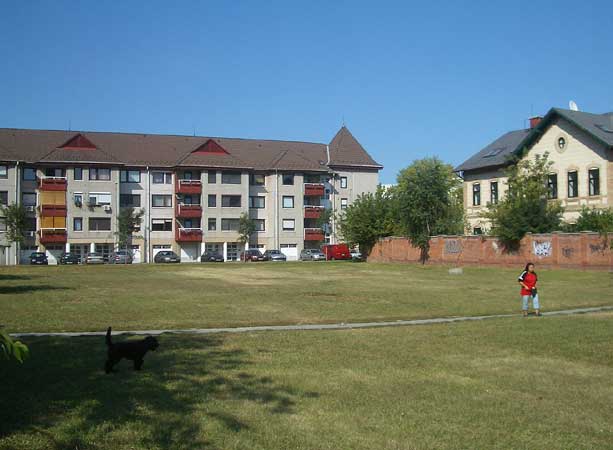
On the edge were recycling bins and the more and more common parking lots.
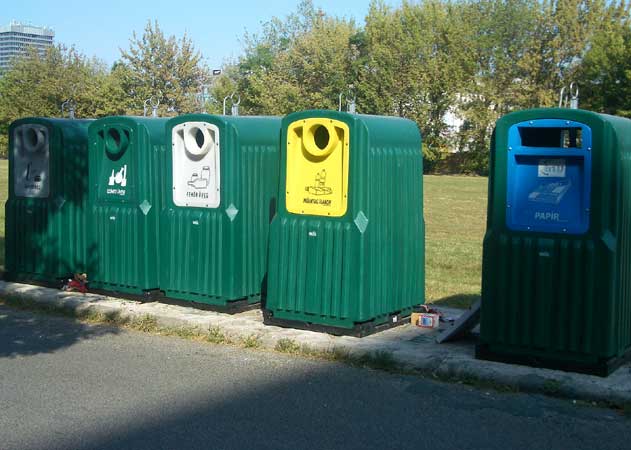
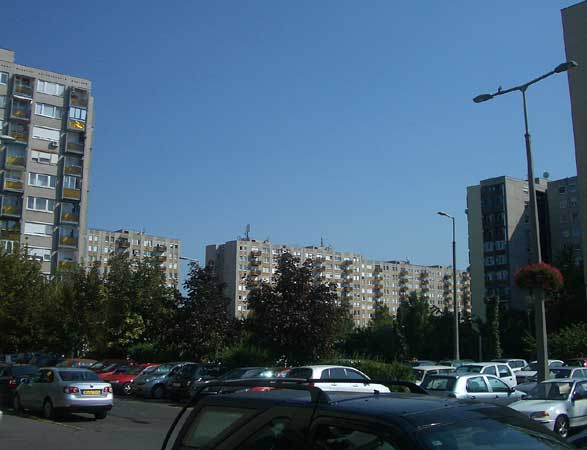
Nearby, were lower rise apartments offering a variety of housing types in the area.
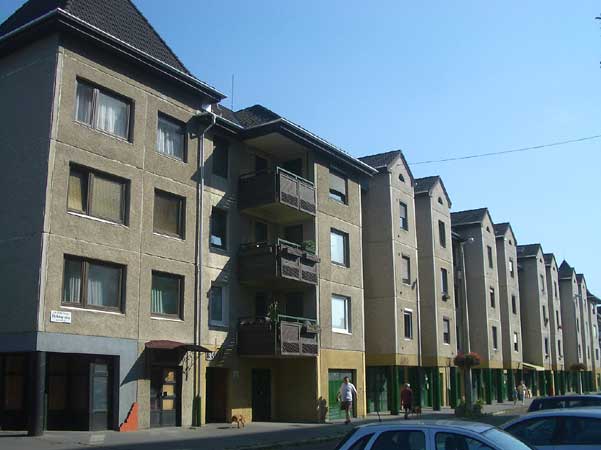
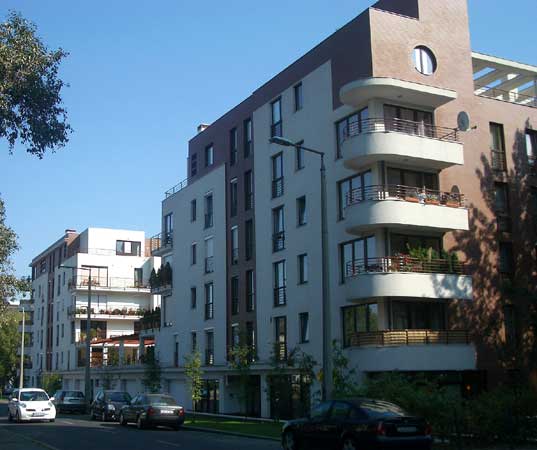
Next, we rode a bus south to Ujlipotvaros, a neighborhood closer to the Belvaros. Here were a rich mix of new apartments and older, traditional residential ones with streetscapes more typical of the close-in neighborhoods.
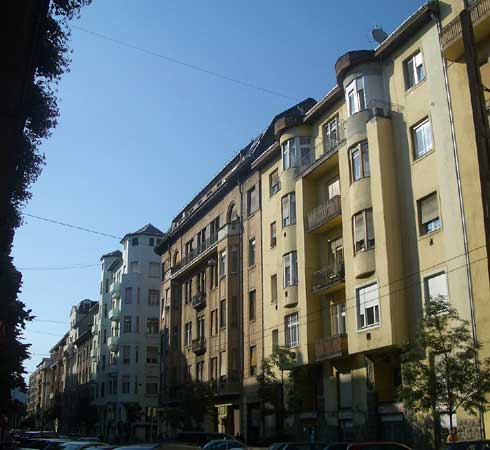
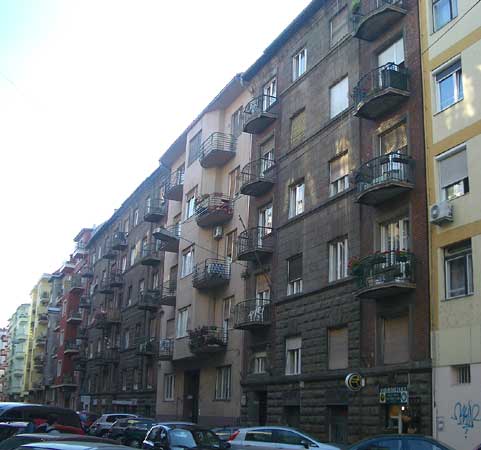
Szent Istvan park on the Duna offered residents a pleasant natural world connection and play ground for children.
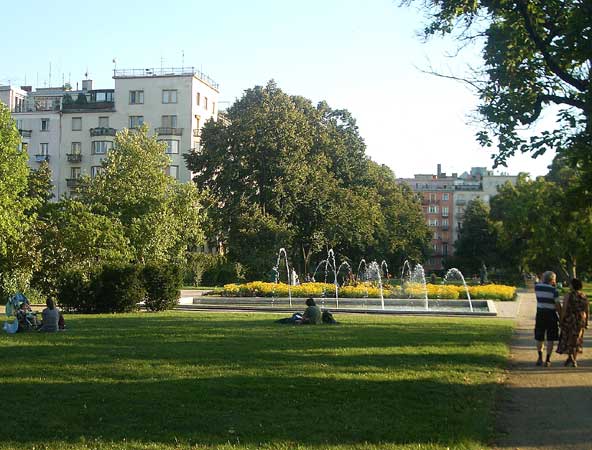
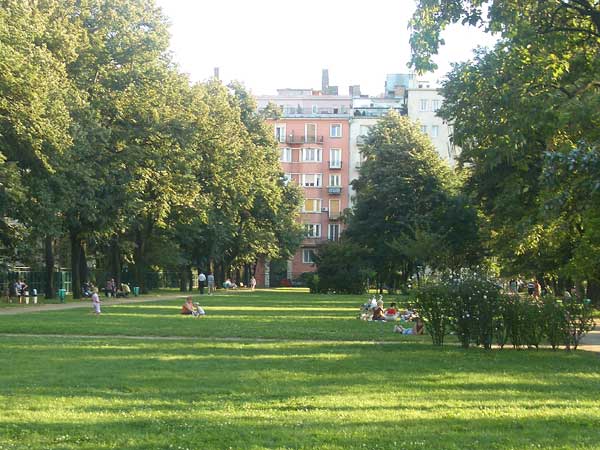
We concluded that Budapest offered people a good range of living choices. Most neighborhoods offered walkable urban environments with shopping, schools, parks and cafes near homes and plenty of mobility options for longer trips. Clearly, the pre-transition high rise housing estates offered a functional approach, while the older, traditional apartment buildings were, in our view, more appealing and charming. Elsewhere, the newer high rises offered a another solution to providing homes for people.
![]()
Later in the day, over a beer, we re-examined what we had seen.
The pre-transition housing estates raised questions for us. Do these very large blocks of small flats offer residents an acceptable quality of life? Are the flats large enough to be comfortable? Are the buildings well insulated against heat, cold and sound? Are they kept in an acceptable state of repair and well maintained? Is someone responsible for maintenance of the common facilities such as the elevators, hallways and entrance lobbies? These buildings might seem to offer a substantial stock of workforce housing, but do people enjoy living there?
In the 1960s, American cities built similar high rise apartment blocks in groups to provide "affordable" housing. Then, in the 1990s, these "housing projects" were demolished because, for a convoluted array of reasons, they just did not offer adequate quality of life to residents.
This brought us to the density question - is there an ideal density? Is it possible to exceed this ideal when residential buildings are too high, too large or there are too many in close proximity? It has been suggested that too many people living in a confined space such as a large apartment block are more likely to squabble with each other about seemingly trivial matters that can grow out of proportion and cause discontent. If this is true, then the more traditional (smaller, lower rise) residential buildings of Budapest or even a suburban single family home would offer a more pleasant lifestyle. But if density is too low, services such as transit become much more expensive or impossible to provide.
This suggested to us that perhaps the traditional residential apartments of Budapest (or Madrid or Brussels or Mumbai) offer a nearly ideal density. People are able to live in more communal, compatible groups; a range of mobility choices can be provided; shops, cafes, schools and parks can be within walking distance.
Based on our limited investigations of Budapest neighborhoods, we concluded that this city has provided residents a wide range of housing choices and we surmise that this range of choices is rather closely aligned with the wishes of the residents. More study would be required to determine if this is true.
Click here to return to More Travels in Europe - Summer 2008 page
![]()